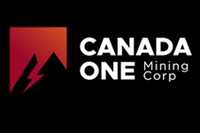
Jiangxi Copper Chairman Li Baomin believes copper will drop this year, with prices ending the year lower than where they started.
Copper hit a 20-month-high last month, pushing prices above the $6,000 a tonne mark, supported by disruptions at the two largest copper mines, Escondida and Grasberg. That said, could prices really trend lower this year?
Many analysts are calling for a market deficit for the first time in six years in 2017, with a rally in copper prices expected to pick up pace, as Chinese demand rises and supply continues to shrink.
But according to Jiangxi Copper Chairman Li Baomin, the red metal is poised to drop this year as higher US interest rates and elections in Europe curb demand. In an interview with Bloomberg, Baomin said prices will end the year lower than where they started.
Prices have eased to around $5,850 per tonne, pulling back to $5,776 per tonne on Tuesday, pressured by the sudden surge of supply into the LME’s warehouses.
That said, copper has risen about 15 percent since Trump was elected US President in November, supported by speculation about his pledge to increase spending on infrastructure which would expand demand for metals.
“There are things worrying us,” Li said, including Trump’s “not clear” policies, higher US rates and uncertainties about who will win European elections. “In addition, some emerging economies’ development is losing momentum.”
New Copper Production
Jiangxi Copper plans to increase production to the maximum capacity of 1.36 million metric tons, compared with about 1.2 million tons last year.
However, global demand still looks set to exceed production, with China’s consumption growth at 6 percent this year compared with 5.8 percent last year, according to Li.
This seems to be the result of fewer investments in new copper projects. There’s a reluctance to invest after years of low prices, BHP Billiton (NYSE:BHP,ASX:BHP,LSE:BLT) CEO Andrew Mackenzie said at a mining conference in Florida last week, while Swedish-Canadian commodities entrepreneur Lukas Lundin, of Lundin Group and Lundin Mining (TSX:LUN) called the industry “gun shy.”
According to a study by the World Bank last year, it can take 25 years from early exploration to bring a new copper deposit into production. As a result, the copper industry seems hesitant to start new projects.
“It’s going to be very difficult for the industry to respond even if it wanted to,” Bloomberg quotes Oscar Landerretche, chairman of Codelco, the world’s biggest copper producer, as saying. “It’s becoming very, very hard to do new projects.”
Despite this, First Quantum is developing Cobre Panama, an open-pit mine that could become the next top copper producer by the end of 2019. At full production, Cobre Panama is expected to yield 320,000 tons a year.
“Good copper projects are scarce at these prices,” First Quantum President Clive Newall told Bloomberg, adding that “[prices are] going to get better, and that’s the ideal time to be bringing something like Cobre Panama into the market,”
Wood Mackenzie estimates a price of around $3.30 a pound ($7,275 a ton) would be sufficient to prompt investment, assuming miners will require a 15 percent rate of return, mining and metals analyst Chang Khoo said.
Is Supply Really Shrinking?
In addition to new output not coming on stream any time soon, the world’s two largest copper mines are still not producing. The strike at BHP Billiton’s Chile-based Escondida copper mine, that accounts for 5 percent of global output, started 27 days ago and has become the longest stoppage at the mine since 2006.
At the same time, Freeport McMoran’s (NYSE:FCX) Grasberg mine has stopped all work as a result of a smelter strike and issues surrounding the renewal of the company’s mining permit.
To add to the curbed supply, workers at Freeport McMoran’s Cerro Verde mine, one of the largest copper producers in Peru, plan to start a five-day strike on Friday to demand better labor conditions, a union representative said on Monday.
Cerro Verde produced 498,951 tonnes of copper in all of 2016, more than double output in 2015 thanks to a recent expansion.
Despite this supply reduction, the copper cathode market will record a surplus, JP Morgan analyst Natasha Kaneva told Reuters.
“Global demand remains healthy but production is responding positively to higher prices in all metals, keeping pace with demand and maintaining well-supplied markets,” Kaneva said.
But according to to David Lilley, co-founder of RK Capital Management LLC and one of the world’s top copper investors, the market is headed for a shortfall of 327,000 metric tons in 2017, rising to 600,000 tons in 2020.
Similarly, Citi analyst said they expect copper to move into a deficit this year, the key drivers being a dramatically slowing rate of mine supply growth and a stabilizing demand picture. They also see price peaks of close to $7,000 a tonne this year.
Don’t forget to follow us @INN_Resource for real-time news updates.
Securities Disclosure: I, Priscila Barrera, hold no direct investment interest in any company mentioned in this article.




